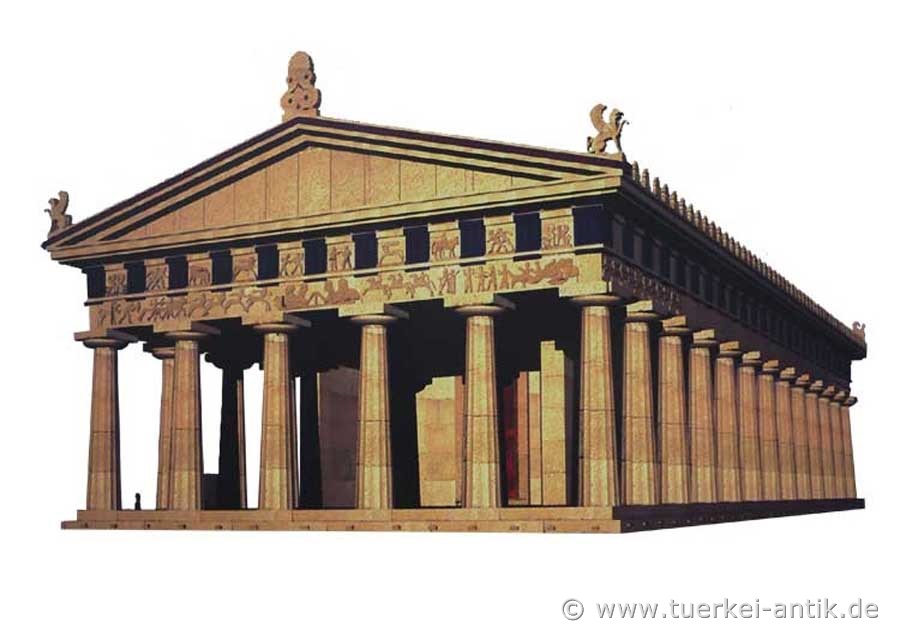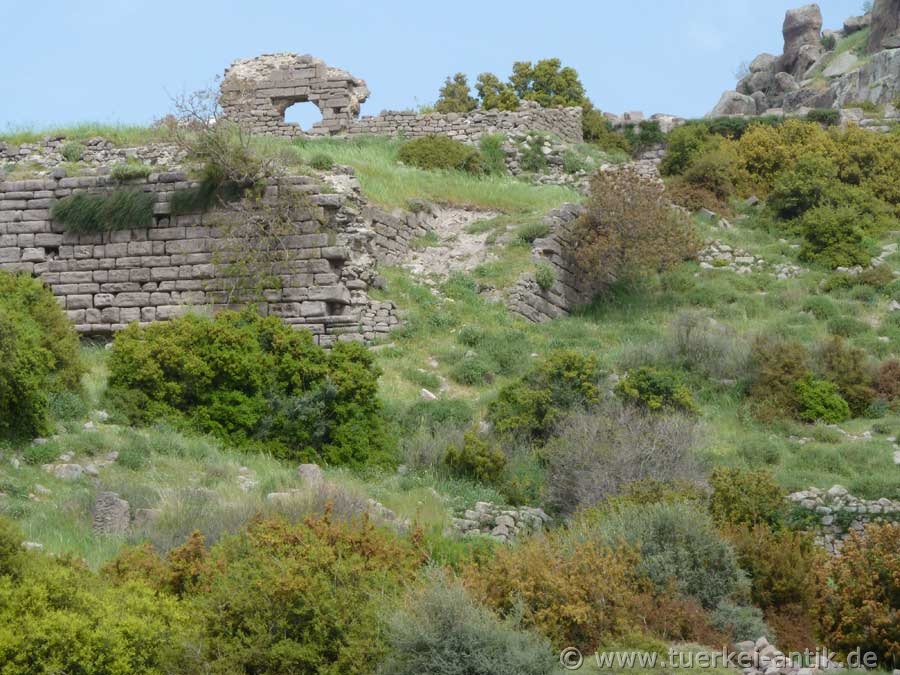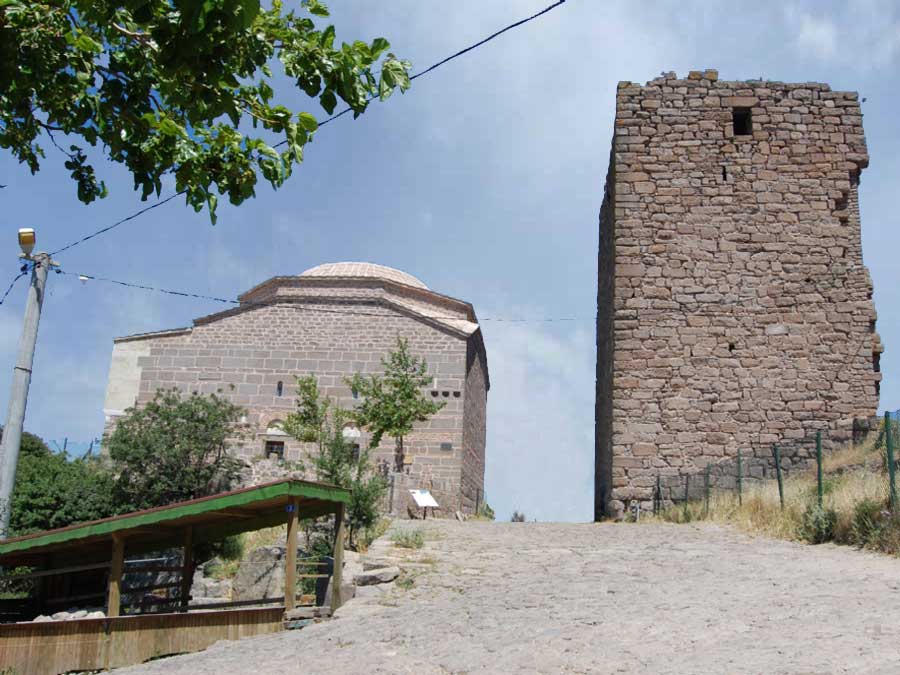 |
| Assos in Mysia | |||
|
|
|
||
| The Athena Temple from the years 530 - 520 B.C. | |||
|
The settlement site, a 234 m high rock of dark trachyte directly at the sea, was already inhabited in the Bronze Age. In the 7th century BC Assos was founded from Methymna on the neighbouring island of Lesbos. The city was a member of the Attisch-Delischer Seebund, but apparently played no role in the Greek-Persian conflicts of the 5th and 4th centuries BC. It was only in the Satrap revolt that it became important, here the rebellious Satrap Ariobarzanes entrenched himself in 366 B.C..
|
|||
|
|
|||
| The city wall | |||
|
|
|||
| Part of the city fortification | |||
|
The city wall is still very well preserved in its extent of 3 km with towers and gates in large parts. It was built in many construction phases from the 3rd century B.C. to the Byzantine period. Next to it, remains of a probably still archaic city wall are visible. |
|||
|
|
|||
| The temple of Athena in a reconstruction | |||
|
The Doric temple of Athena at the highest point of the city hill was built around 530-520 BC. Some of the columns made of native trachyte, which were covered with white marble stucco in antiquity, were partially restored as part of archaeological research.
|
|||
|
|
|||
| The Agora above the theatre | |||
|
In the city area, on the slopes between the Agora and the sea, the Agora with its two-sided halls, the Buleuterion, the Gymnasion, the theatre and a Roman thermal baths are still preserved today. Outside the city wall is a well-preserved necropolis with tombs and sarcophagi. |
|||
|
|
|||
|
|
|||
| The Theatre | |||
|
|
|||
|
|
|||
|
Mosque next to a watchtower of the city fortification |
|||
|
|
|||
|
At the edge of today's village stands a mosque from the time of Murat I. (1326-1389), thus one of the earliest Ottoman mosques ever. It was built using numerous antique and Byzantine spoils. |
|||
| Photos: @chim | |||
| Translation aid: www.DeepL.com/Translator | |||
| Source: Wikipedia and others | |||
|
|
|||




